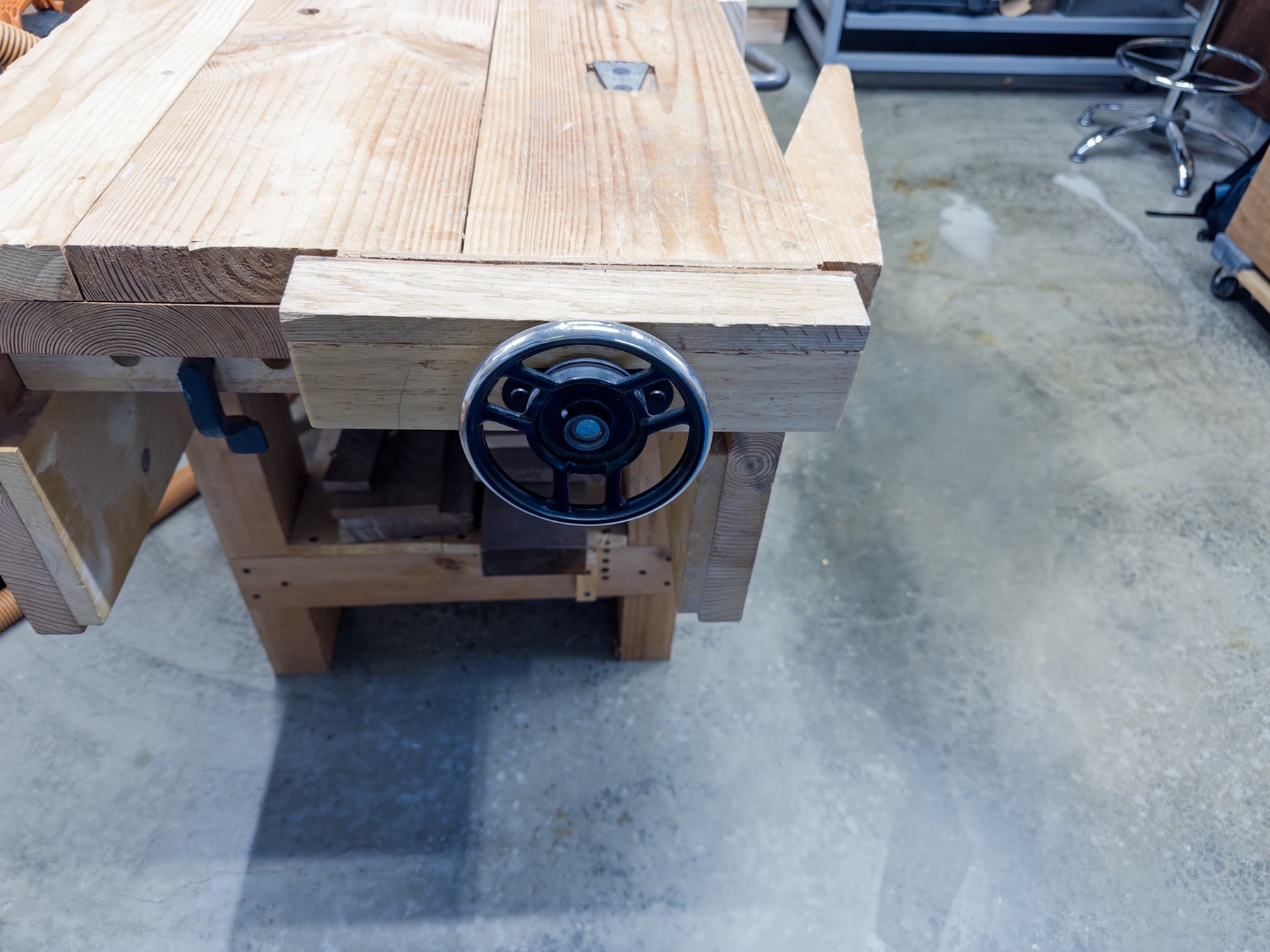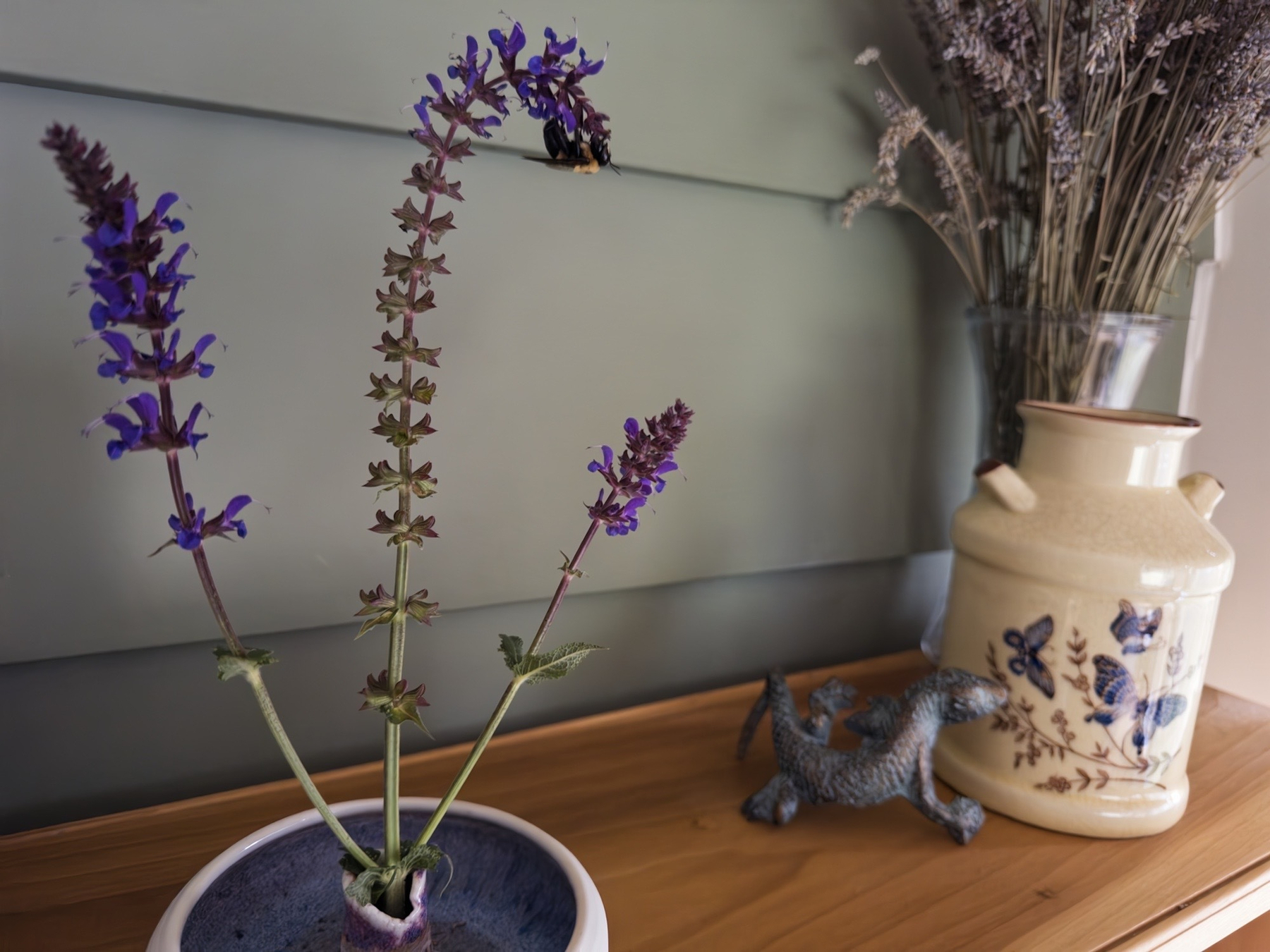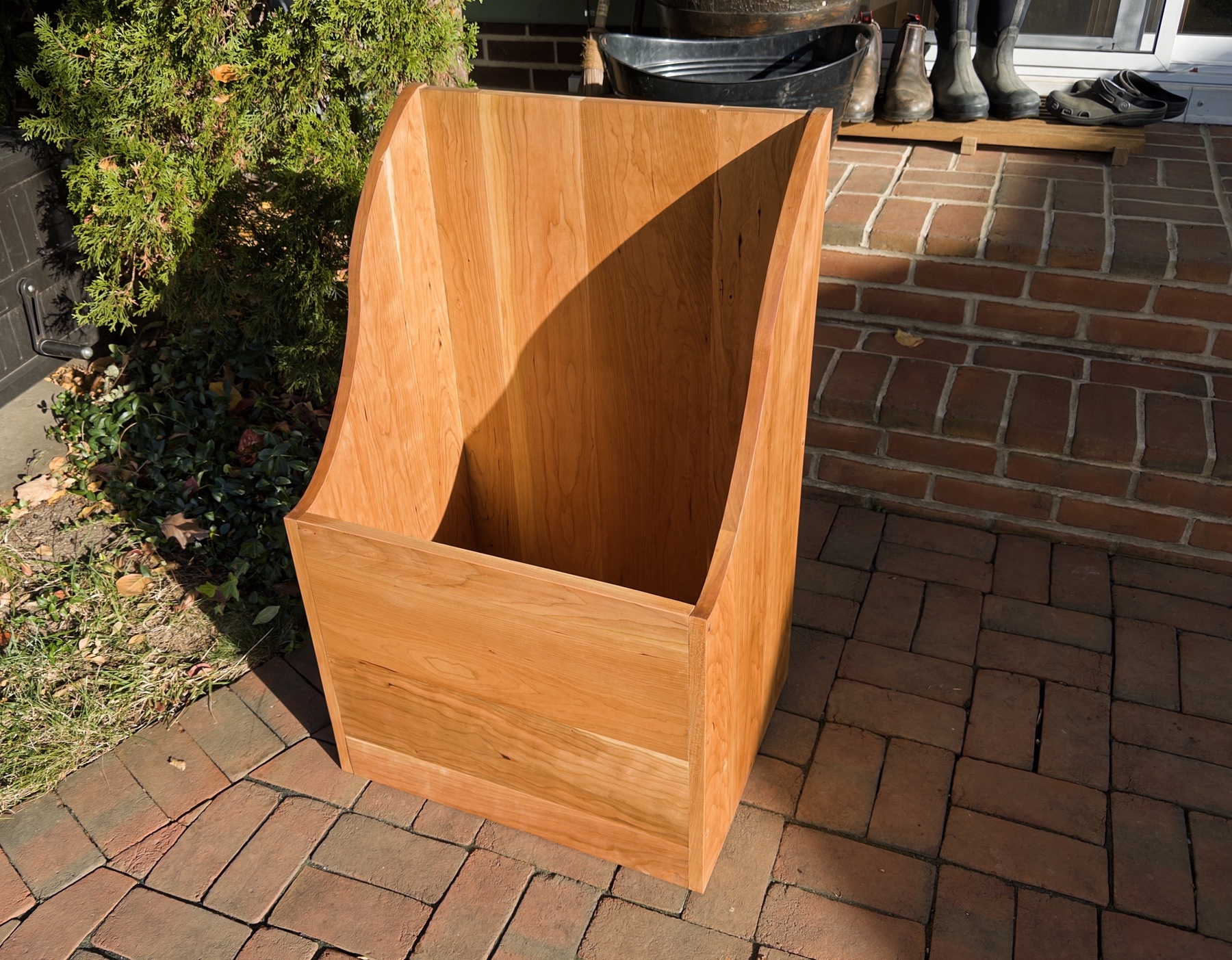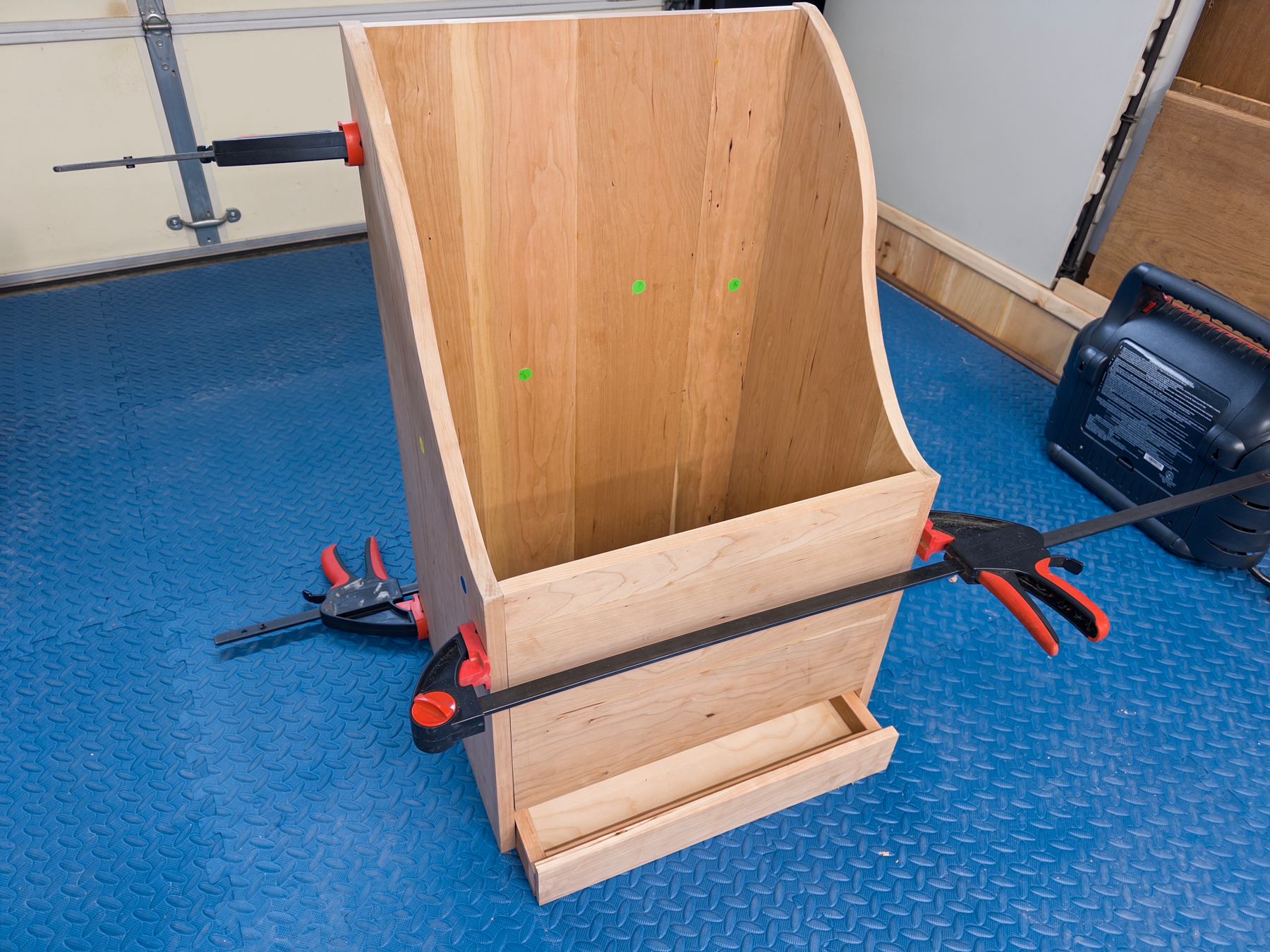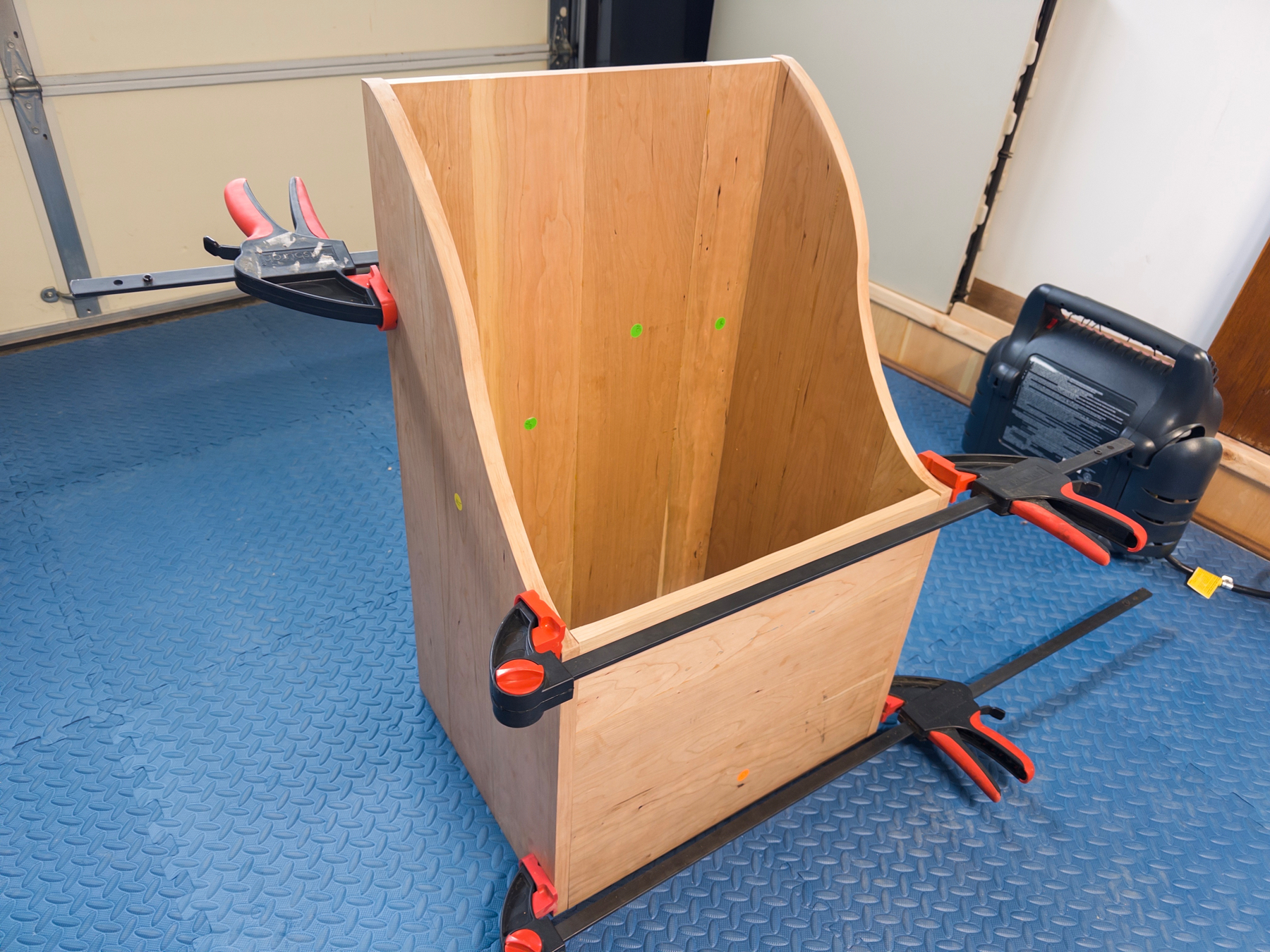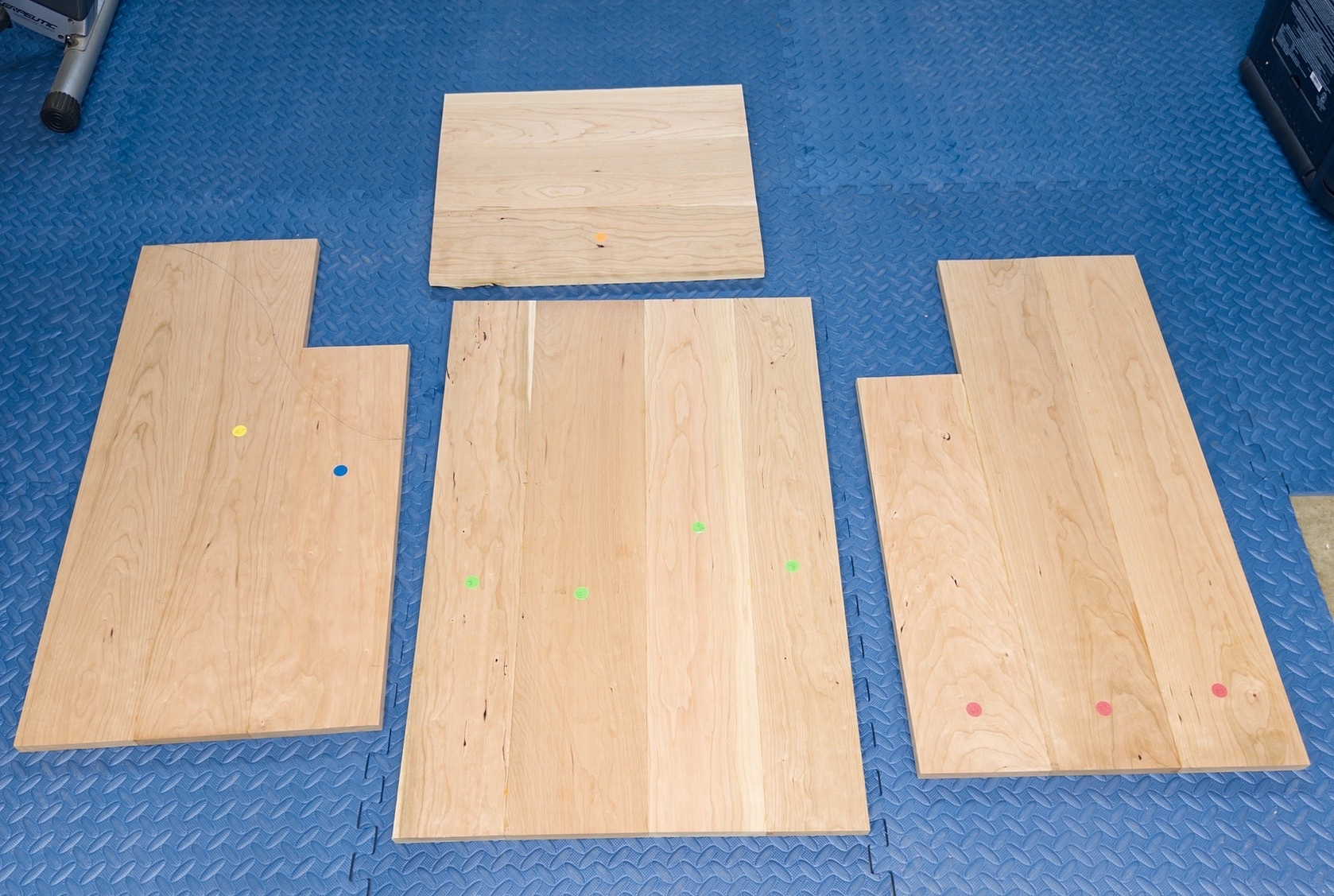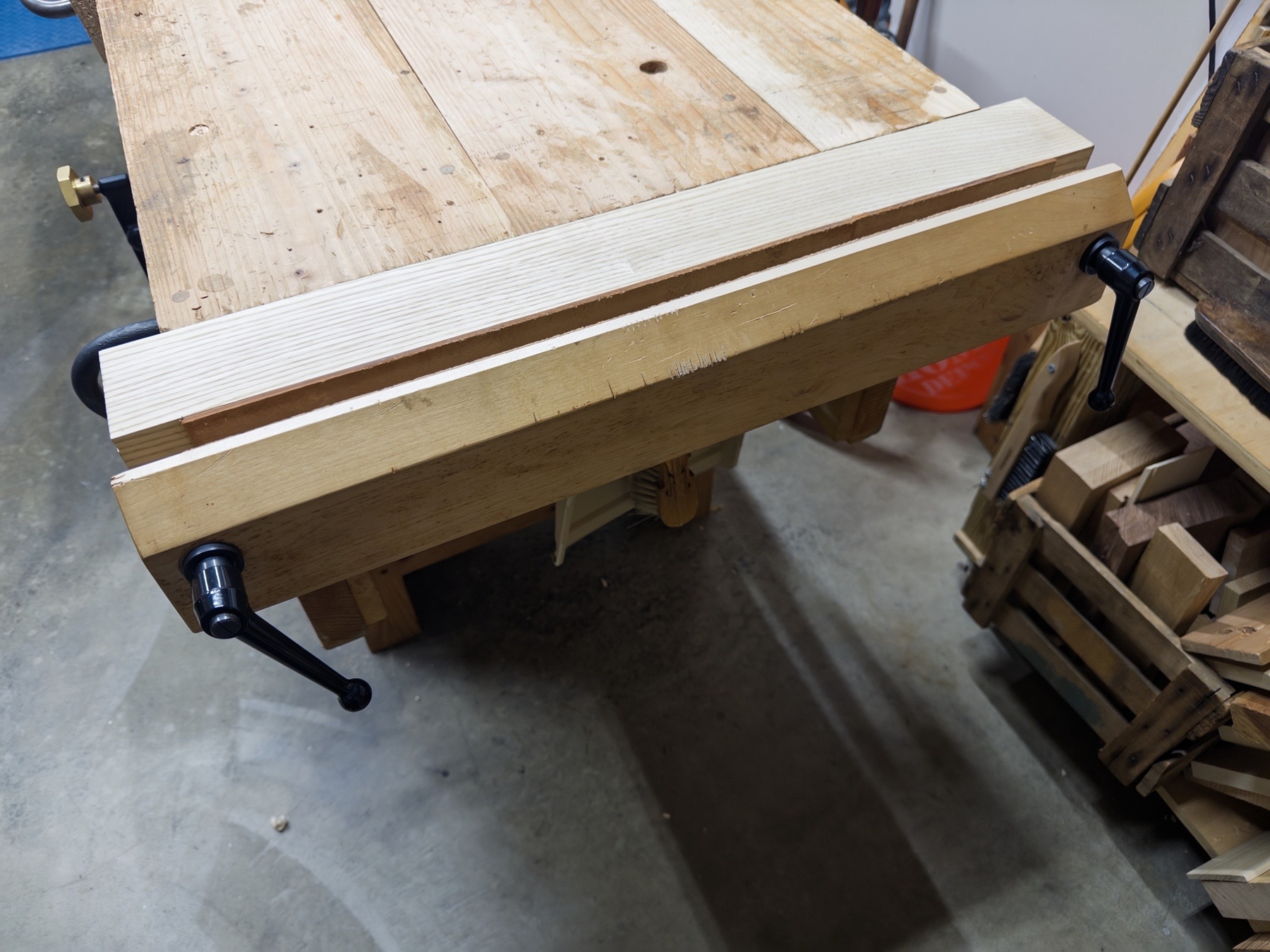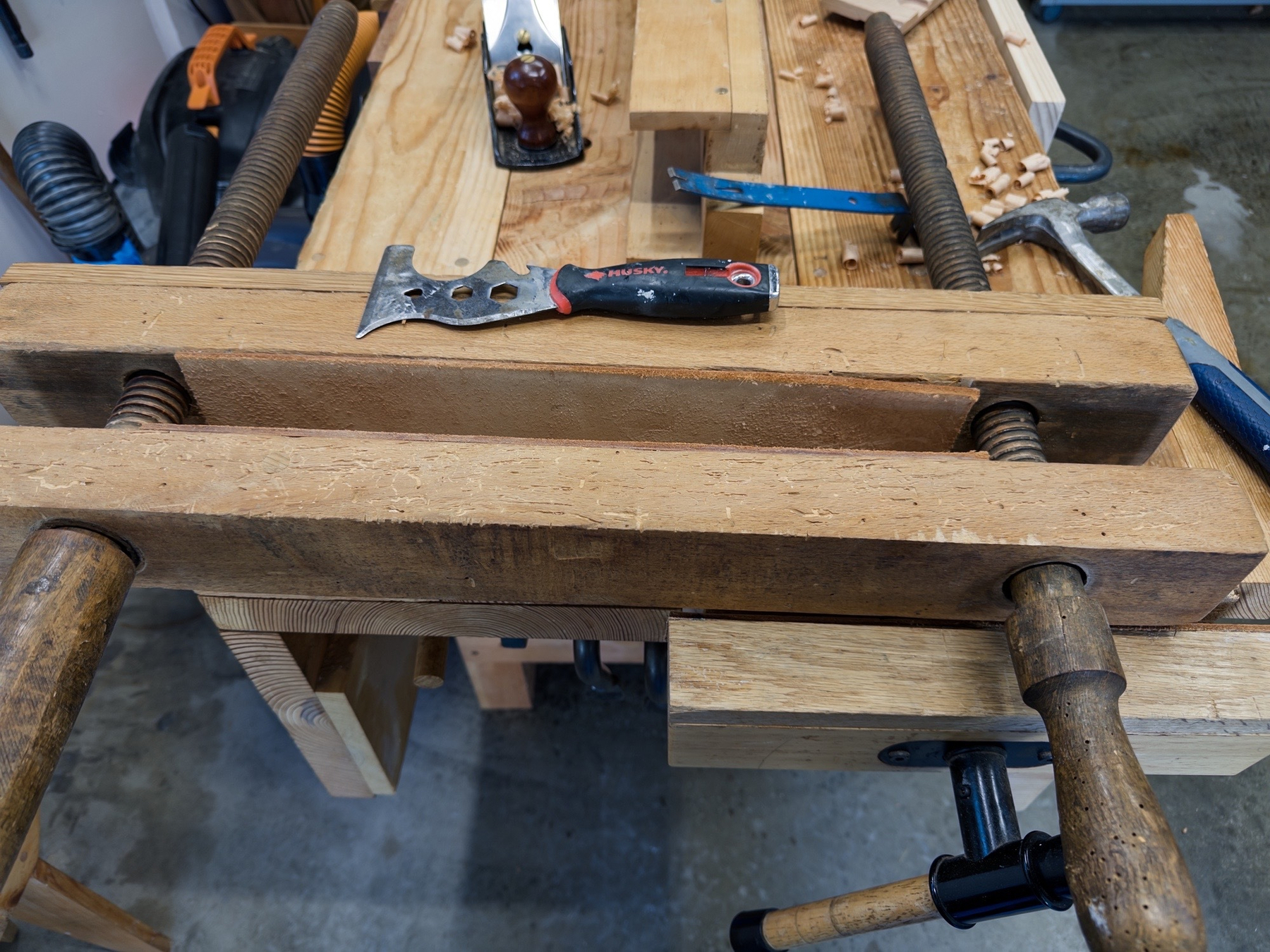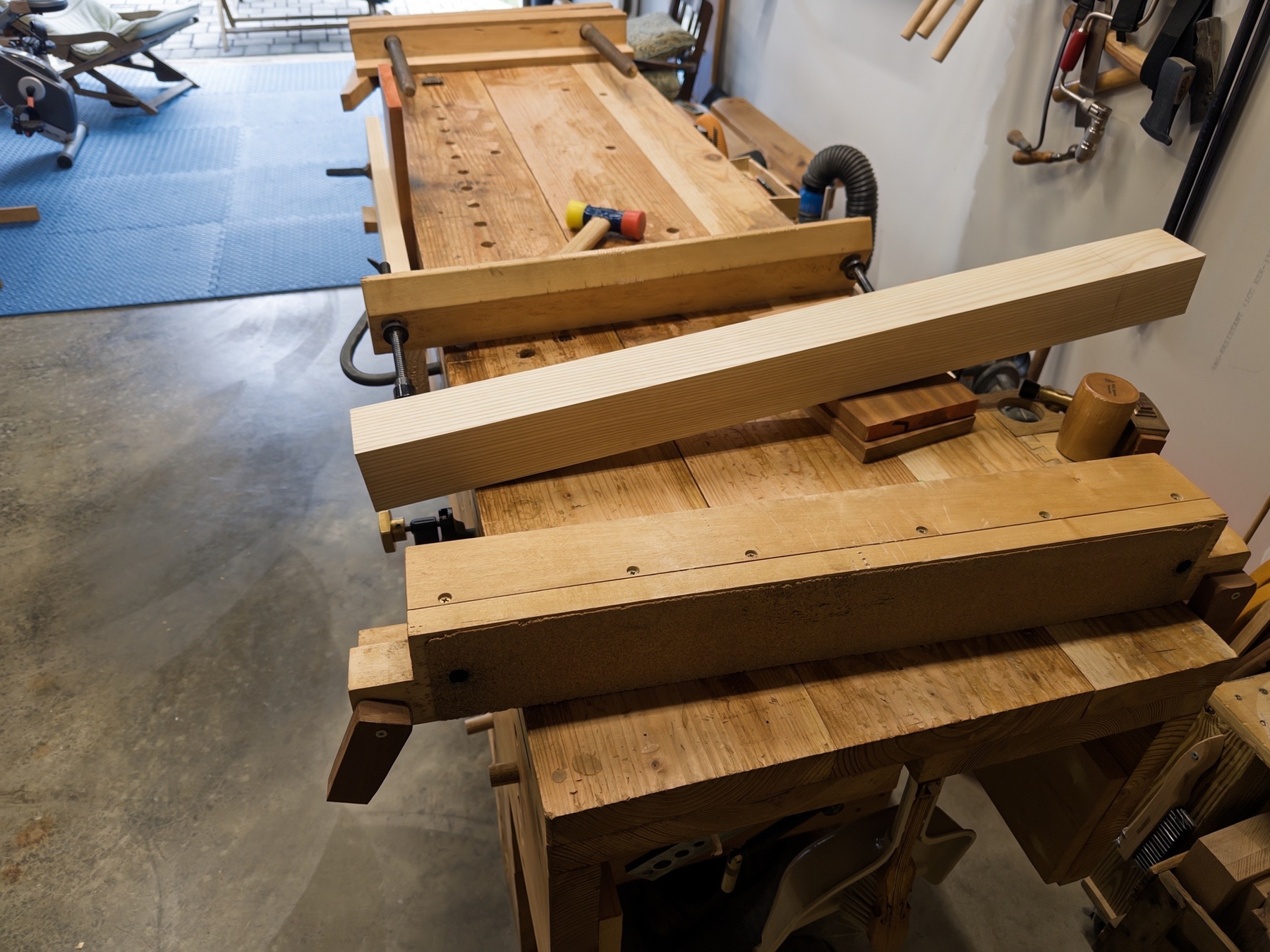I’m on a bench modding kick. Years ago, I installed a small vise on the left end of my Nicholson bench, reclaimed from a discarded Harbor Freight small workbench. I use it to hold small things.
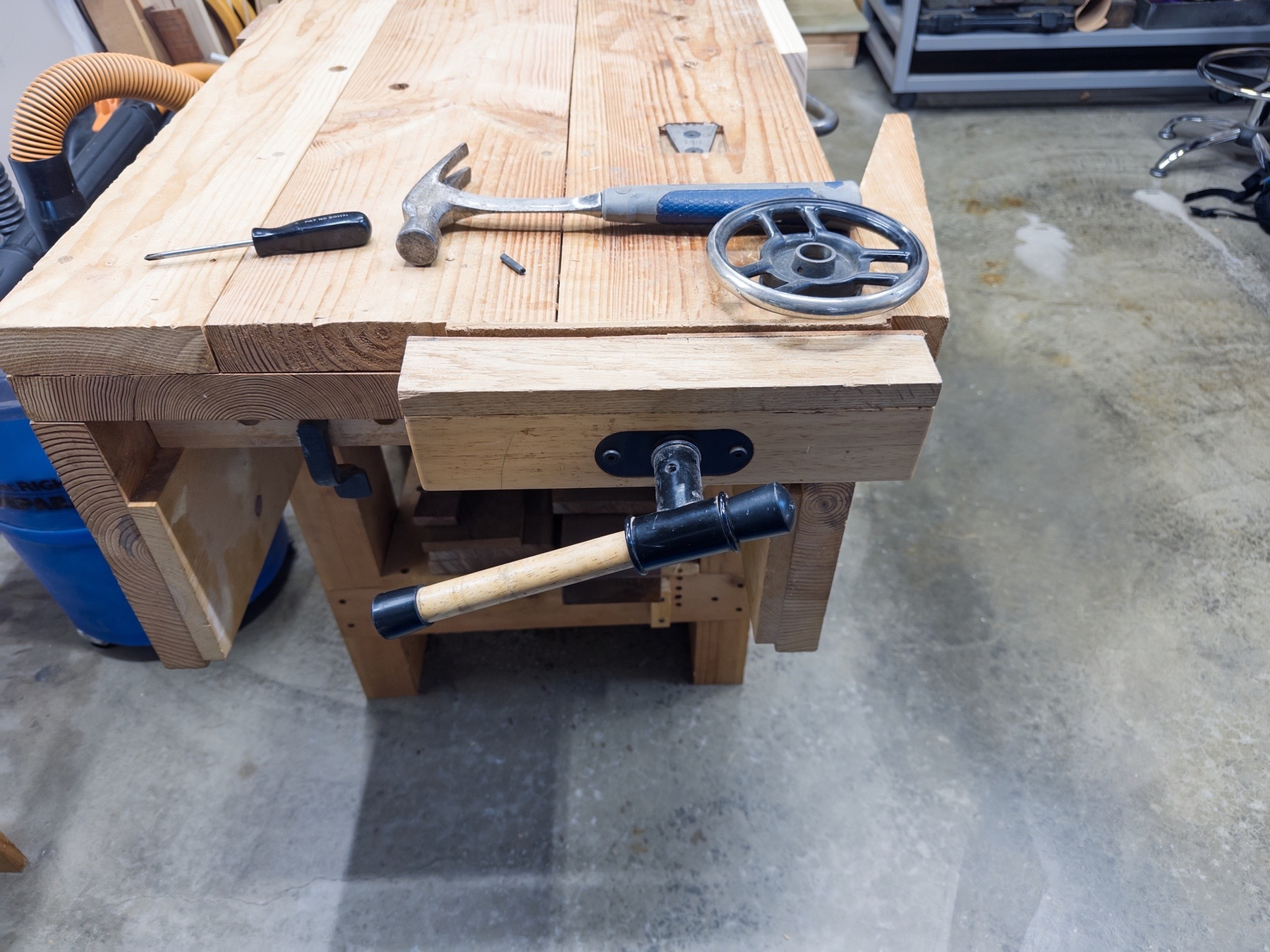
This evening, I replaced the arm with a cast iron wheel I’ve been holding on to for years, looking for something to do with it. They just don’t make good parts like this these days. I save everything… This wheel comes from a Pfaff sewing machine I took apart about ten years ago. I think it’s a nice upgrade to the vise.
As an aside, I turned the base of the old sewing machine table to a cabinet to hold all of my network stuff (Synology, hubs, switch, etc.) about a year ago. I documented that in an earlier post.
